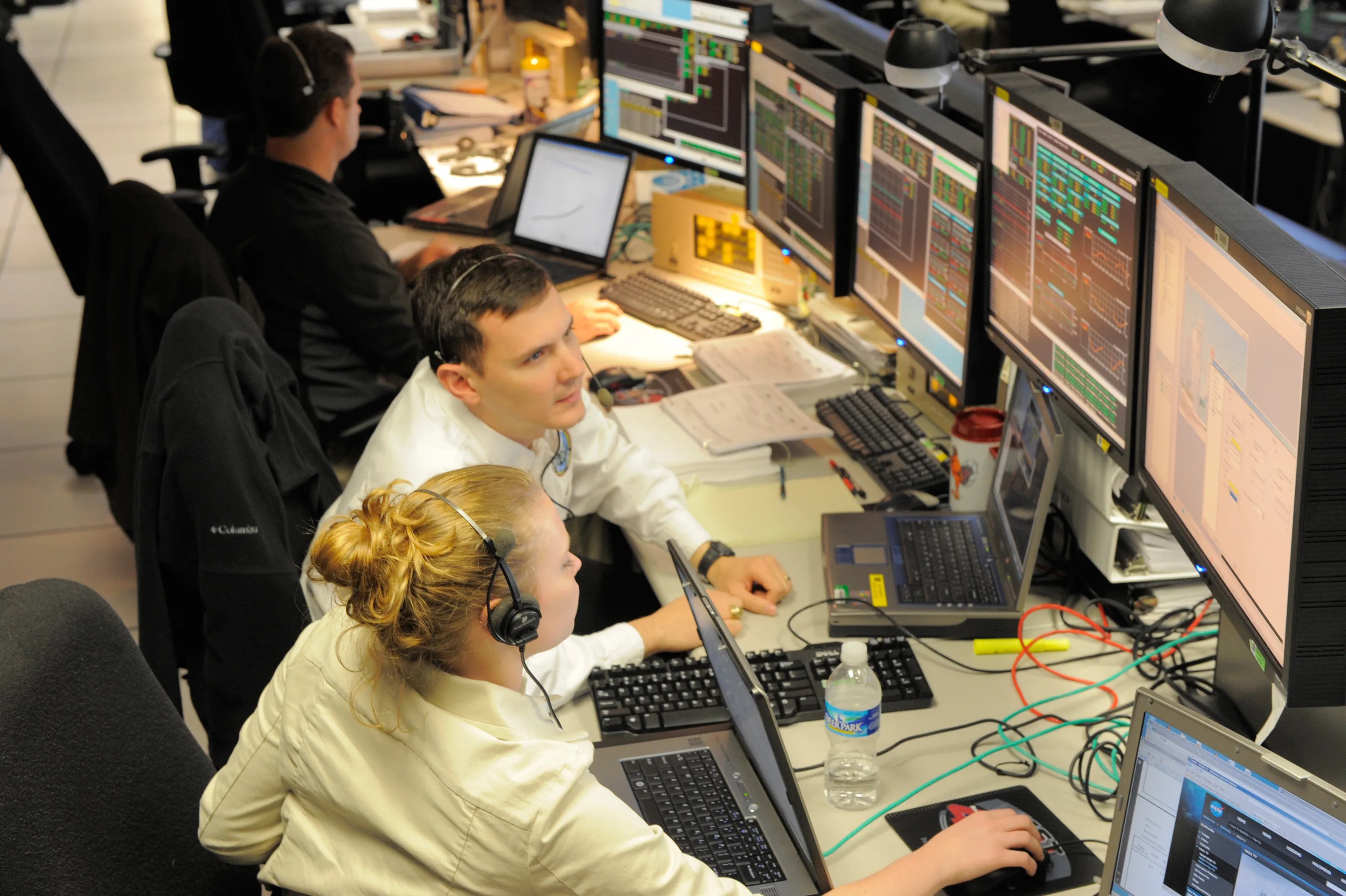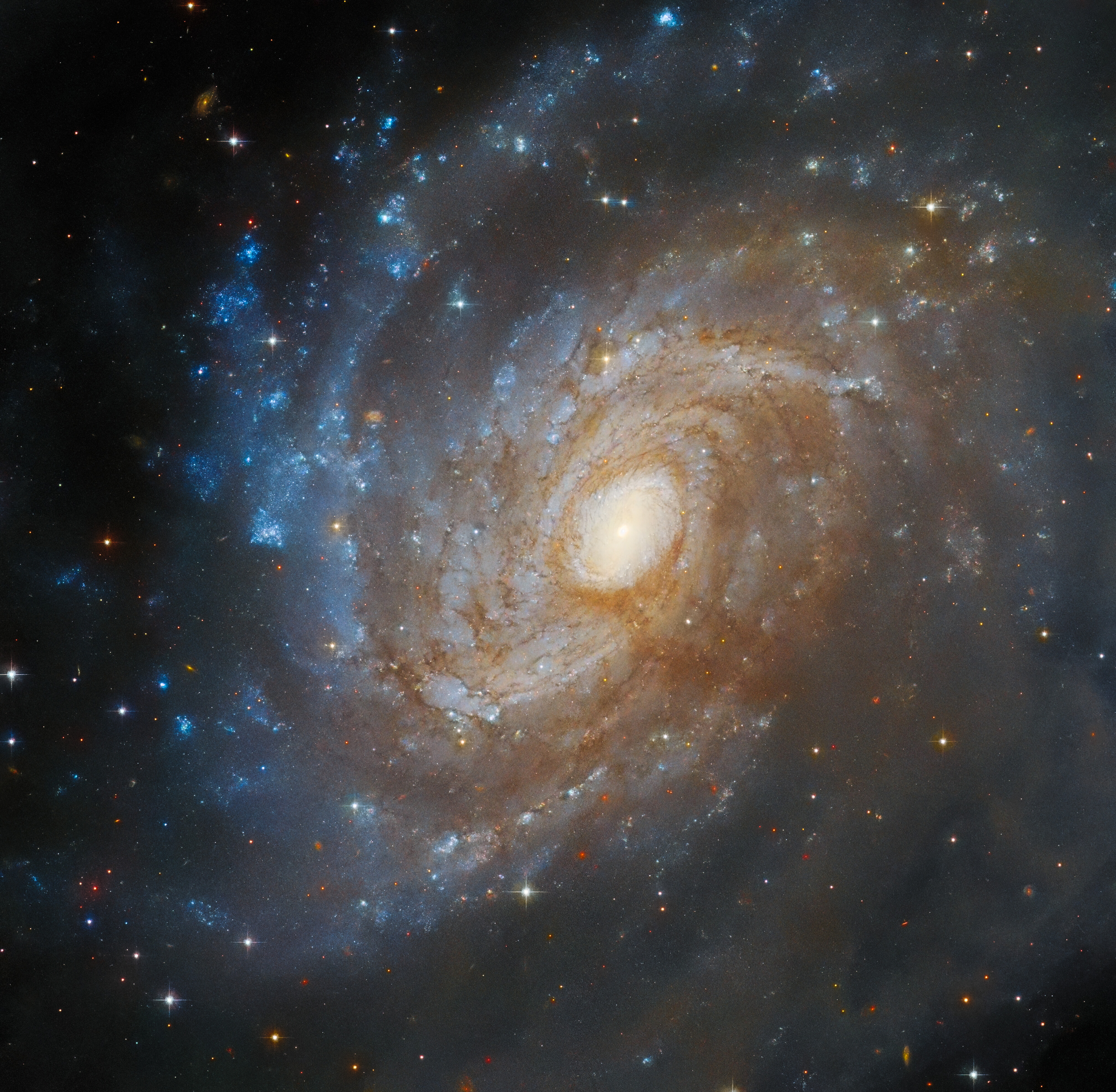3 min read

Controllers in Goddard's Space Telescope Operations Control Center monitor the Hubble servicing mission. This photograph was taken on May 11, 2009.
Credit:
NASA/Pat Izzo
The major event on Wednesday in the Space Telescope Operations Control Center (STOCC) was Space Shuttle Atlantis’ rendezvous with the Hubble Space Telescope.
Most of today’s STOCC time line of rendezvous events went as planned. However, in the final hour or so before the scheduled grapple time, the nominal plan for capturing Hubble had to be modified due to a telemetry downlink communication issue.
Without the planned return communication link through Atlantis, STOCC controllers were not able to execute a planned roll maneuver of the telescope around its long axis as Atlantis came up from a lower altitude to meet it. The purpose of this roll maneuver was to put the grapple fixture on Hubble in a prime location for Atlantis's robotic arm to capture the telescope.
Despite not being able to follow the nominal plan, a back-up approach which accomplished the same objective was used where Atlantis flew around Hubble and reached the proper location so the robotic arm could take hold of the telescope.
The communication issue was eventually resolved and the remaining planned daily activities were all successfully completed.
Shortly after 1 p.m., Atlantis made the final approach from underneath the telescope. Mission Specialist Megan McArthur then used the robotic arm to grab hold of Hubble. The actual capture of the telescope came at 1:14 p.m. EDT. A little less than one hour later, at 2:12 p.m., Hubble was firmly on the Flight Support System platform in the rear of the payload bay.
Beginning tomorrow morning, the astronauts will install the first of two new science instruments and replace a command and data unit. The new science instrument is called Wide Field Camera 3. The new camera extends Hubble’s capability not only by seeing deeper into the universe but also by providing wide-field imagery in all three regions of the spectrum — from ultraviolet into visible and then into near infrared. It is this wide "panchromatic" coverage of light that makes Wide Field Camera 3 so unique.
Also scheduled for installation on Thursday is a new Science Instrument Control & Data Handling or SI C&DH unit. The SI C&DH provides all of the electronics to command Hubble’s science instruments from the ground and to flow science and engineering data back to the ground. The system is a collection of 14 components, arranged in six stacks that are mounted on a tray to create a single replaceable unit.
The final activity of the spacewalk will involve securing the Soft Capture Mechanism to the bottom of the telescope. The Soft Capture Mechanism will enable the future rendezvous, capture, & safe disposal of Hubble by a crewed or robotic mission.
The Hubble Space Telescope now sits in Atlantis’ payload bay, near 22,000 pounds of hardware that will give the telescope a longer life and increased observation strength.
The SM4 team at Goddard will be standing by for tomorrow’s space walk which will see the start of work to bring Hubble to the apex of its capabilities.
Ed Campion
NASA's Goddard Space Flight Center







